|
by Joanna Hinderberger Gastineau School, 1st Grade Before going into one of my Artful Teaching lessons, I want to take a moment to admit how impressed I am with this new way of teaching. As I started integrating Artful Teaching into my practice, I realized how important, yet basic and easy it is to do. Honestly, I must admit that I am a little shocked that I have not always taught this way. I had completely overlooked the importance of explicitly teaching kids how to think. I expected this to be a skill that kids would just know what to do when I said, “think about it.” Now, I have learned that by giving my students the tools they need to “think,” they have become much more critical thinkers and incredibly curious about their world. My classroom culture is now built around student thinking. Students have learned to critically think about new topics when I introduce them by using the skills of:
Okay, enough chit chat, let’s get into one of the lessons. Sea Week was one specific area that I wanted to focus on, and I especially wanted to integrate art, science, and writing. I have found that for first grade students, it can be challenging to take another’s perspective. This is something that we work on for developing social skills. I first chose to conduct an informal assessment to gain some information on what the students already know about low tide beaches and creatures in Southeast. I also wanted to figure out what it was that they were interested in learning about. In order to do this, I gathered students on the carpet and explained that we would be starting a new science unit on sea creatures. I used the Artful Thinking Routine Step Inside as a way for the children to demonstrate what they already know about the beach. I had them close their eyes and imagine walking off the bus, arriving at the beach, and exploring the low tide. I had them imagine what the beach would sound like, look like, feel like, and smell like. After allowing students to use their imaginations, I had them go to their seats and draw and write about each of the senses that they think they would experience at the beach. I prepared student books using two pieces of paper that have lines on the bottom and blank space on the top for drawing. The papers were folded in half so that there were four spaces for four senses. I labeled each page for each sense (look, smell, feel, and sound) with an icon to help the students stay focused on the task. I have found that scaffolding thinking into a focused area can often encourage more writing than given a broad topic. I asked the students to write their thinking, meaning any thing that they think is true, as well as any questions or wonderings they might have. Students were given time to write and draw to express what they already think they know to be true and then ask questions that I could use as a way to plan. After students thought, wrote, and drew quietly I had then take any color of construction paper that they wanted to create a cover for their book. They were then instructed to come up with a title for their work. Some chose, “What I think about the beach” or “Tide Time.” When everyone was done, we regrouped and shared some of our ideas in a collaborative conversation. After that pre-assessment I was able to examine what students wrote and drew as a way to determine what the students need and want to be taught about the sea and what prior knowledge they already had with them. The following weeks were focused on learning about the sea using many thinking routines. I used art, videos, and photos to guide students through images about the sea. A few weeks after that pre-assessment and after the students had expanded their knowledge of tides and the beach, I had students “Step Inside” again, only this time as a living creature. As a way to teach beach etiquette, I wanted the students to really understand the importance of being respectful to living beach creatures. In order to do this I asked students to "Step Inside" a tide pool. We had looked at several photos, videos, and live tide pool creatures so students understood what to expect to see in a tide pool. They also became familiar with common creature vocabulary enough to determine which creature they would like to “Step Inside.” I explained to the class that in a few days we would be going to a low tide beach and that before we arrive I would like for them to explore the perspective of these living creatures on the beach. As a group we had a collaborative conversation about what it might be like to live in a tide pool: What creature would you be? What would you do all day? What would scare you? What would make you happy? Why would you be in the tide pool and not in the wide-open ocean? The students came up with several fantastic ideas and wonderings. They were able identify what they would be and why and then really build on each other’s comments to come up with some respectful and thoughtful insights. I must note, that having a collaborative discussion is another wonderful side effect of Artful Thinking. Prior to integrating Artful Thinking, I found that my young students (6 and 7) were so eager to share their ideas that they were not as thoughtful about listening to what others were sharing or able to adapt their thinking based on other comments that they heard. However, during this discussion, students asked questions and other students gave their answers. Other students came up with connections that sparked thinking in other students. The discussion was very rich and students brought up some very thoughtful and interesting points about what it would really feel like to be so small in a tide pool. After the discussion, students went to their seats and began writing and drawing their thoughts as they stepped inside a tide pool. The students drew pictures and wrote questions and thoughts from the perspective of a living creature in the tide pool. Some students focused their thoughts on what they would do, eat, see, and where they would go such as, “I would wonder what I would eat and I would get bored swimming around and around. When the tide went in and out I would think I was in a washing machine.” Others focused their writing and drawings on their reaction and thoughts of students coming to the low tide beach and exploring the tide pool that the creature was living in. Some stated, “I would be scared and I would want to tell the kids not to take me from my family.” After students completed their Step Inside writing, we came back to the carpet and had a very organic conversation about beach etiquette. Many of the students focused on what they wish they could tell students at the beach to make sure that creatures do not get hurt. Many students brought up the idea of being gentle, putting creatures back where they were found, and not stepping on them. This naturally presented a great opportunity for the students to come up with beach etiquette rules before going to beach, based on what the sea creatures would find important.
Finally, we went to the beach. The children had such a fantastic time! I heard them going through their own thinking routines as they were exploring. Many naturally began to “See, Think, Wonder” when they saw a new creature. They were very careful about where they stepped and demonstrated the importance of putting creatures back in a protected spot in a tide pool away from birds or other creatures that might hurt them. In comparison to other beach trips from previous years, where I have not done the “Step Inside a Tide Pool” Thinking Routine, this class was so much more aware and respectful of creatures. They really demonstrated compassion and respect.
0 Comments
Leave a Reply. |
ArtStoriesA collection of JSD teachers' arts integration classroom experiences Categories
All
|
|
|
Artful Teaching is a collaborative project of the Juneau School District, University of Alaska Southeast, and the Juneau Arts and Humanities Council.
|
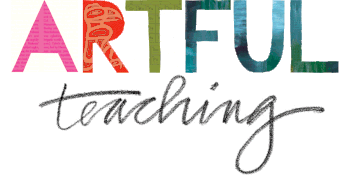
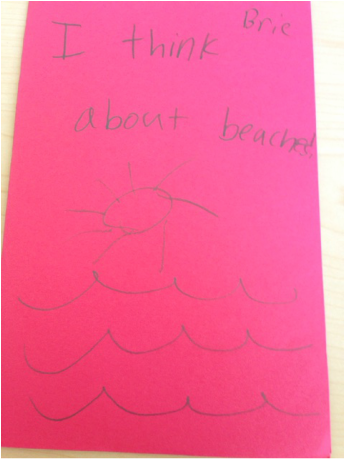
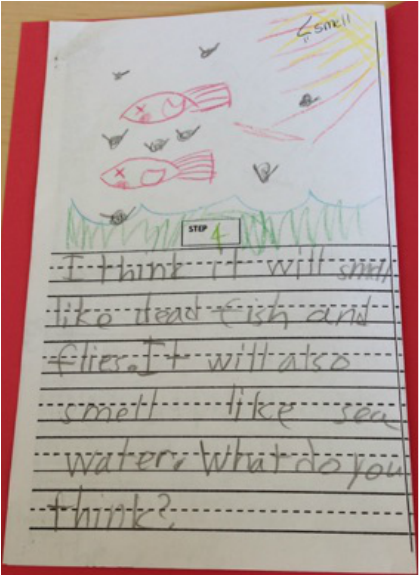
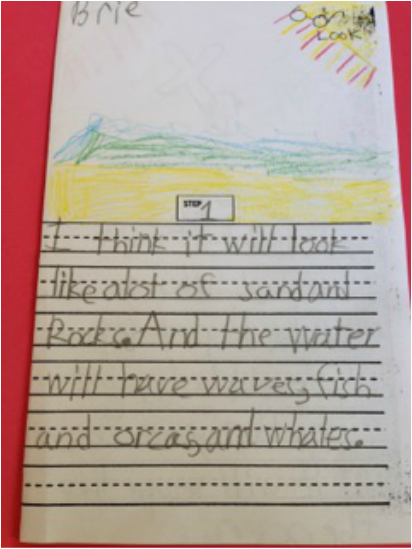
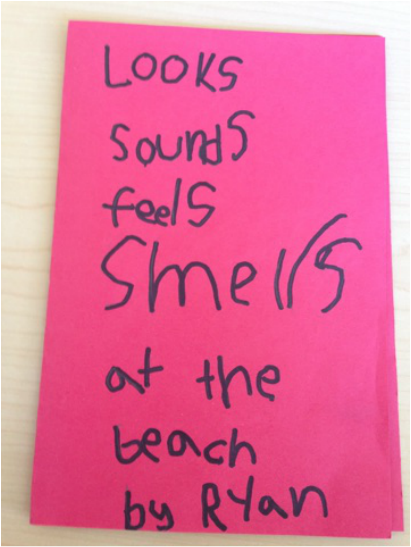
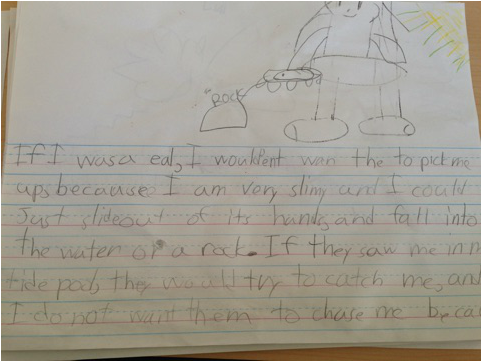
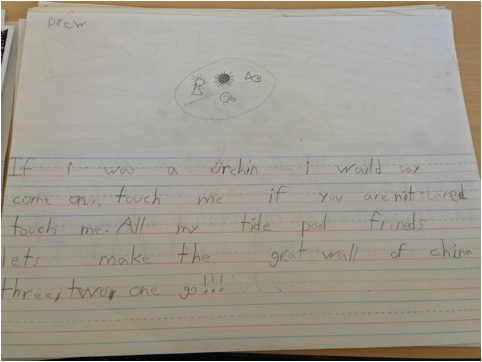
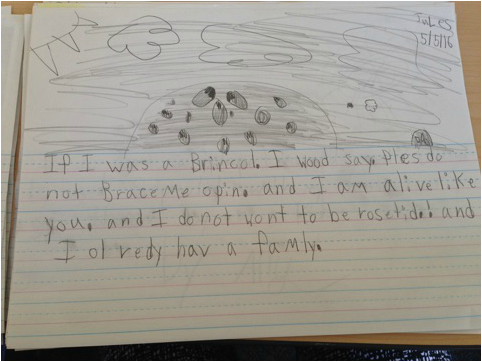
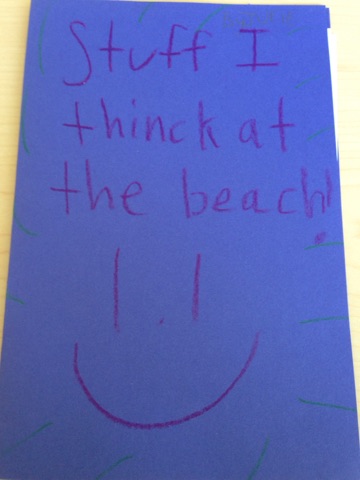
 RSS Feed
RSS Feed